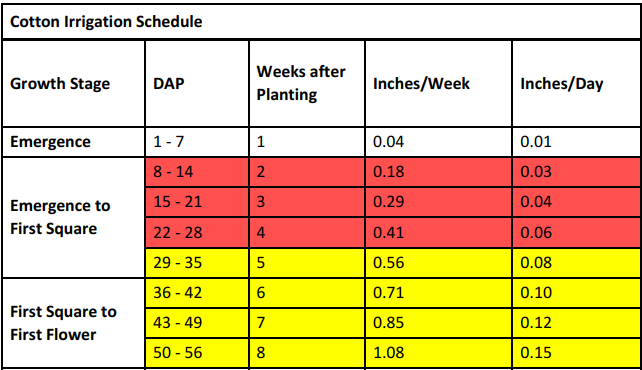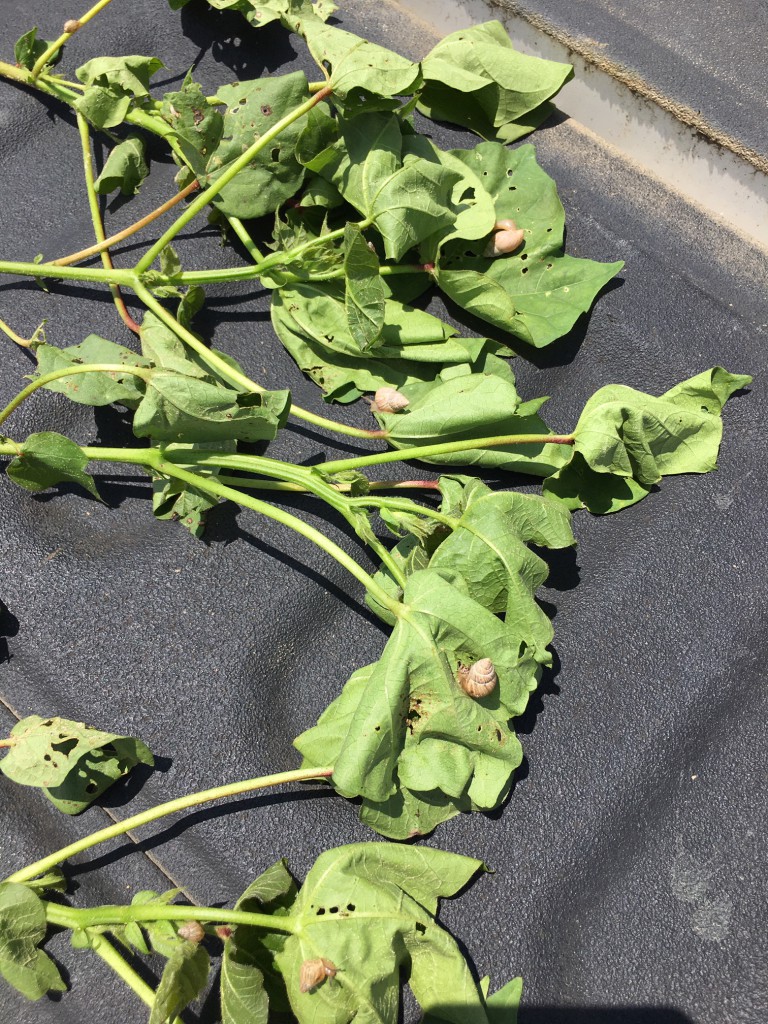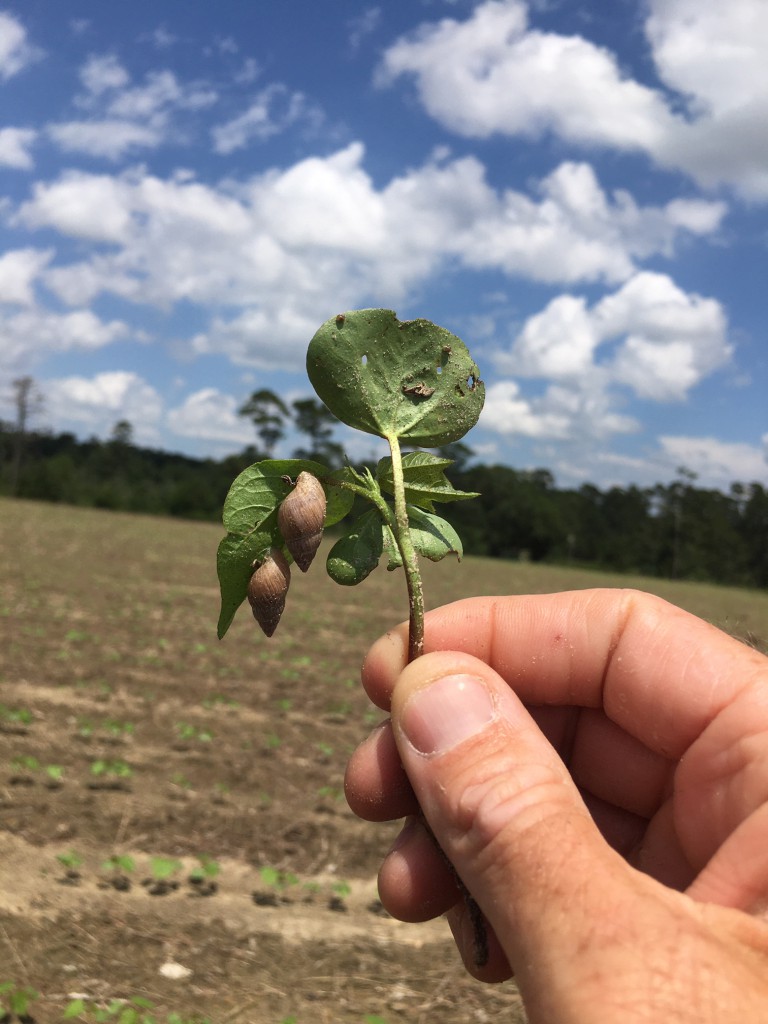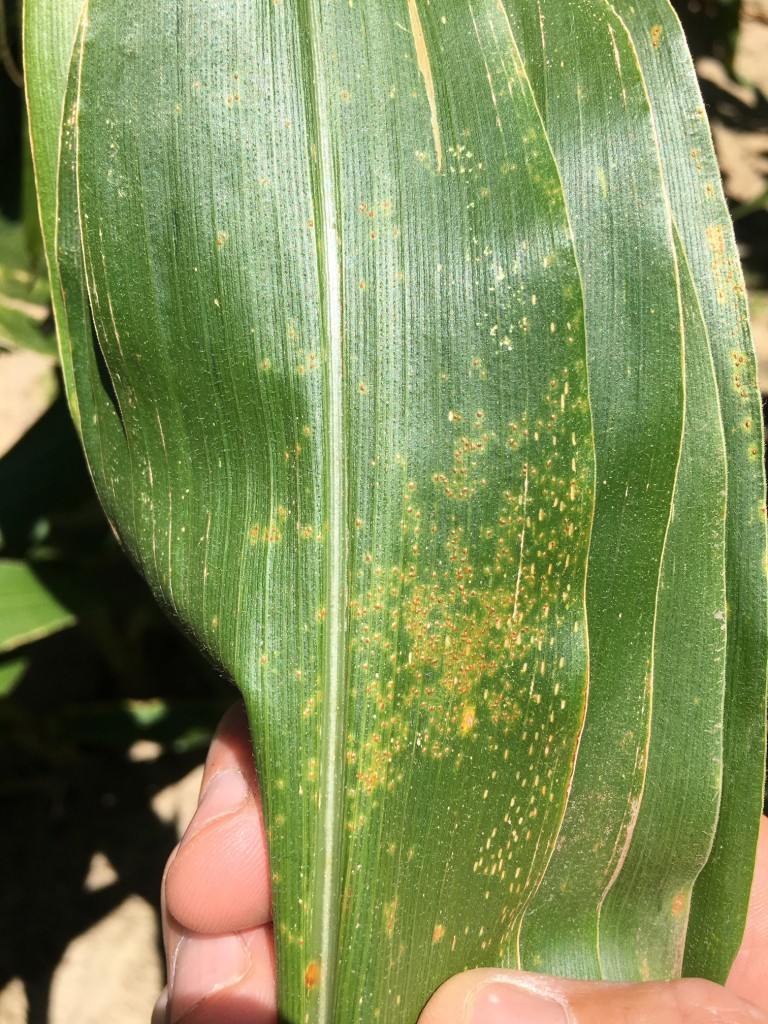There has been a few things going on this week in cotton, corn, hay and peanuts. Lets discuss plant bugs, snails, southern rust, bermudagrass stem maggots and a new insecticide label in peanut.
Cotton: The area cotton crop ranges from just emerging to 10-12 nodes. Producers are sidedressing, applying herbicides and pgr’s. Topics that came up this week included plant bugs, irrigation on snails.
Plant Bugs: I have been getting a question or two about plant bugs. I have been seeing low to moderate populations in area fields. Our primary method for scouting plant bugs is square retention. Our goal is to retain 80 percent of all first positions as we enter bloom. The square retention technique works well in pre-bloom cotton but is not as a reliable technique in blooming cotton as physiological shed confounds counts. More scouts are using sweep nets to monitor plant bugs. Sweep nets are an excellent tool for monitoring adult plant bug populations, but the drop cloth (especially a black drop cloth) is more effective for monitoring immature plant bugs.
The thresholds for tarnished plant bugs are below. Tarnished plant bug thresholds can be used for clouded plant bugs, but clouded plant bugs should be counted 1.5 times when using a sweep net. Note that the threshold is higher during the third week squaring and bloom compared with the first two weeks of squaring.
Sweep Net and Drop Cloth Thresholds:
Third week of squaring through bloom: Drop Cloth: 3 plant bugs/6 row feet, Sweep Net: 15 plant bugs/100 sweeps
First 2 weeks of squaring: Drop Cloth: 1 plant bug/6 row feet, Sweep Net: 8 plant bugs/100 sweeps
Cotton Irrigation: Below is an irrigation schedule from emergence to first bloom for cotton.

Snails in Cotton
I have been getting a question or two about snails in cotton. According to Dr. Phillip Roberts, UGA Cotton Entomologist, snails do not impact cotton yield and there is not an economical control option in row crops. If you have any questions please let me know. Below are examples of snails on cotton.


Corn: Corn in Colquitt County ranges from VT to early dent. I found southern rust in Colquitt County early this week. The corn field where the rust was found was in the late dough to early dent stage of development. Growers need to protect their crop until dough stage.

Below is a corn irrigation schedule. I had a question about when to terminate irrigation in corn. Do not terminate corn irrigation until black layer is achieved.

Peanuts: Dr. Mark Abney, UGA Peanut Entomologist, has told county agents about a new Portal insecticide label on peanut. Below are a few thoughts from Dr. Abney.
Portal (fenpyroximate) received a label and can be used in peanut for mite management in 2020. The supplemental label is attached. We tested Portal in UGA trials (at the 32oz rate), and it provided very good control of mites in a high pressure scenario.
As a reminder, there are only two products registered and recommended by UGA for mite control in peanut: Comite and Portal.
I recommend using 20 gallons of water per acre when targeting mites with a ground application.
Bermudagrass Stem Maggot: Bermudagrass Stem maggot activity in Colquitt County has increased over the last couple of weeks. Hay producers who experienced a high level of stem maggot damage at the end of the last cutting of hay should consider implementing the BSM suppression technique. This technique includes an insecticide application 7-10 days after cutting. For more information on managing and mitigating bermudagrass stem maggots, click here. According to the Pest Control Handbook, the lowest labelled rate of pyrethroids labeled for bermudagrass can help manage stem maggot.
Have a great day,
Jeremy M. Kichler
Colquitt County Extension Coordinator
